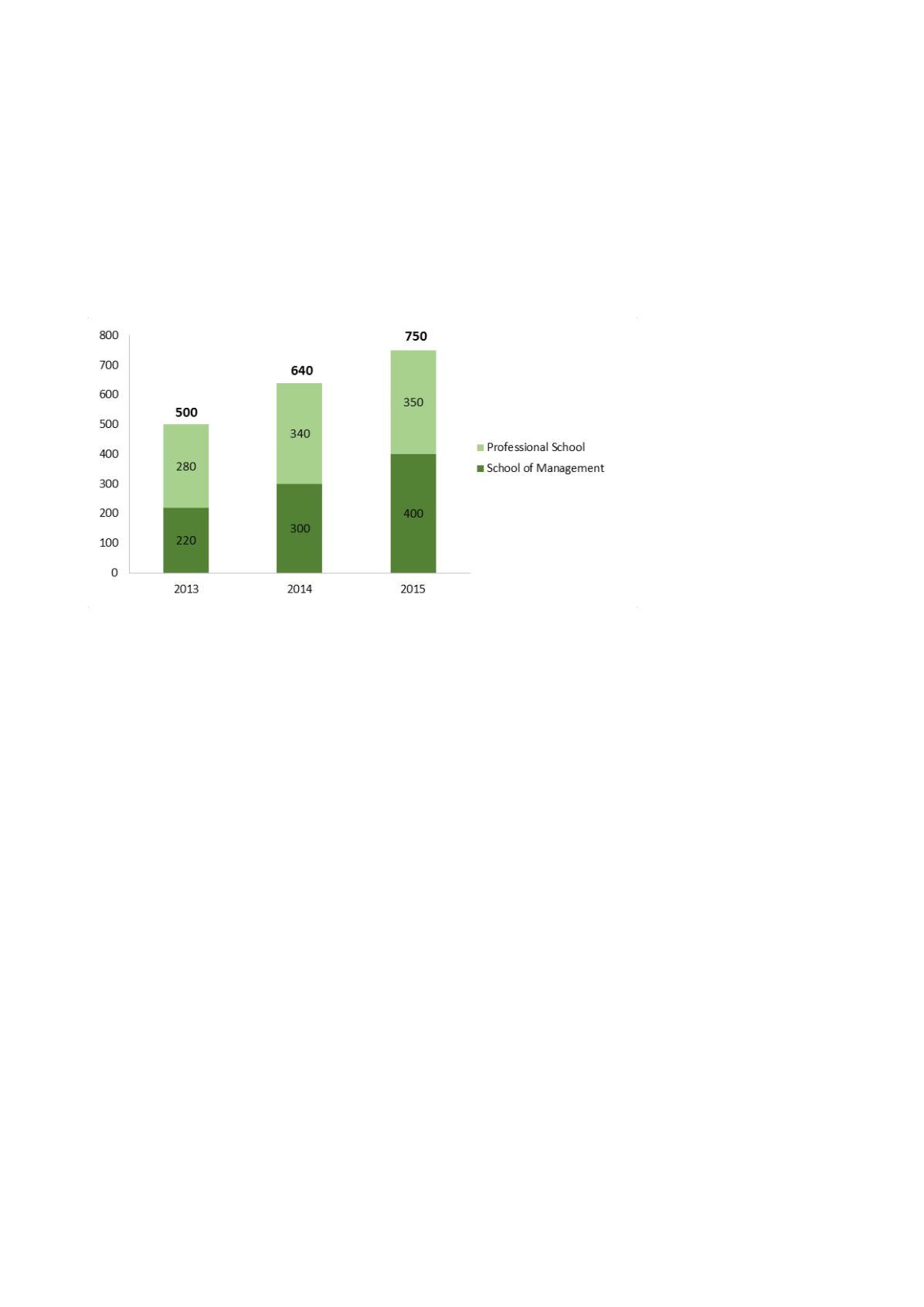

Prysmian Group – 2015 Sustainability Report
Prysmian’s People
________________________________________________________________________________________________
93
The first Regional Leadership Program (RLP) of the APAC region
The first Regional Leadership Program (RLP) of the APAC region began in August 2015 with a five-day course in
Singapore, during which various professors from two prestigious international business schools (SDA Bocconi and SMU
– Singapore Management University) gave lectures on various topics including: Developing Strategic Projects, Business
Model Innovation, Human Capital across borders in Asia and Doing Business in APAC.
PRYSMIAN GROUP ACADEMY – PARTICIPANTS
Once again in 2015 the number of participants in the Prysmian Group Academy rose substantially compared
to the previous year (more than 15%). The increase in the number of staff involved also saw a rise in the
number of courses, which increased from 30 to 42 between 2014 and 2015.
PERFORMANCE MANAGEMENT: P3 PRYSMIAN PEOPLE PERFORMANCE
About 5,000 staff involved in 2015.
In order to achieve our business objectives and continue to improve our results, each employee must be put
in a position to make a daily contribution. This requires the allocation of clear objectives agreed with
management and the provision of constant feedback about the work performed and results obtained.
The Prysmian People Performance system (P3) was introduced for the first time in 2012. After a pilot phase
targeting the Group's executives, the system was then extended to the entire managerial and clerical
population in all countries, involving around 5,000 staff in 2015.
The objectives of the Prysmian People Performance system are:
to align personal objectives with those of the Group, thereby motivating each employee to do their
best and generate value for the entire organisation, creating a single business identity;
to facilitate communications between managers and staff, so that the results achieved can be
shared;
to train those deemed most deserving, based on objective appraisals.
This process, backed by an on-line platform, implements 5 main steps:
definition of performance: determine targets and expected behaviours
constant feedback: consolidated and lasting relations between managers and staff

















